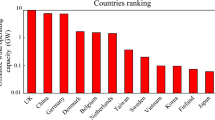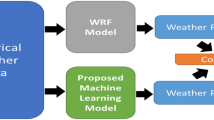Abstract
Drought is among the most important natural disasters influencing different aspects of human life. In recent decades, intelligent techniques have shown to be highly capable of modeling and forecasting nonlinear and dynamic time series. Hence, the present study aimed to forecast drought using and comparing the multilayer perceptron artificial neural network (MLP ANN), adaptive neuro-fuzzy inference systems (ANFIS), support vector machine (SVM) model, and the autoregressive integrated moving average (ARIMAX) multivariate time series. To this end, the precipitation data obtained from the Yazd synoptic station for a 51-year statistic period were used. Moreover, the humidity levels for short-term (3 and 6 months) and long-term (9, 12, 18, and 24 months) periods were calculated using the Standardized Precipitation Index (SPI). Next, based on the results of calculations, the 1961–2002 period was selected as the control group and the 2003–2012 period was selected as the experimental group. In order to forecast the SPI for the t + 1 period, values of SPI, precipitation, and temperature of previous eras were used. Results indicated that in a 9-months period (as the timescale), the ARIMAX model gives SPI values and forecast drought with more precision than the SVM, ANFIS, and MLP models.







Similar content being viewed by others
References
Abramowitz M, Stegun A (1965) Handbook of mathematical formulas, graphs, and mathematical tables. Dover Publications Inc, New York
Bacanli UG, Firat M, Dikbas F (2008) Adaptive neuro-fuzzy inference system for drought forecasting. Stoch Environ Res Risk Assess 23(8):1143–1154
Cancelliere A, Bonaccorso B, Mauro G (2006) A non-parametric approach for drought forecasting through the standardized precipitation index. Metodi statisticie matematici per l Analisi delle serie idrologiche. 1(1):1–8
Chadsuthi S, Modchang C, Lenbury Y, Iamsirithaworn S, Triampo W (2012) Modeling seasonal leptospirosis transmission and its association with rainfall and temperature in Thailand using time- series and ARIMAX analyses. Asian Pac J Trop Med 5(7):539–546
Cristianini N, Shawe-Taylor J (2000) An introduction to support vector machines. Cambridge University Press, Cambridge
Drucker H, Burges C, Kaufman L, Smola A, Vapnik V (1997) Support vector regression machines, advances in neural information processing systems 9. MIT Press, Cambridge, pp 156–161
Durdu OF (2010) Application of linear stochastic models for drought forecasting in the Buyuk Menderes river basin, western Turkey. Stoch Environ Res Risk Assess 24(8):1145–1162
Edwards DC, McKee TB (1997) Characteristic of 20th century drought in the United States at multiple timescales, Climatology report. Colorado State University, Fort Collins
Fan J, Shan R, Cao X (2009) The analysis to Tertiary- industry with ARIMAX model. J Math Res 1(2):156–163
Fatehi marj A, Meijerink AMJ (2011) Agricultural drought forecasting using satellite images, climate indices and artificial neural network. Int J Remote Sens 32(24):9707–9719
Han P, Wang PX, Zhang SY, Zhu DH (2010) Drought forecasting based on the remote sensing data using ARIMA model. Math Comput Model 51(11):1398–1403
Haykin S (1999) Neural networks, a comprehensive foundation, 2nd edn. Prentice-Hall, Englewood Cliffs, pp 135–155
Jalalkamali A, Sedghi H, Manshouri M (2011) Monthly groundwater level prediction using ANN and neuro-fuzzy models: a case study on Kerman plain, Iran. J Hydro-Inform 13(4):867–876
Jang JSR (1993) ANFIS: adaptive-network-based fuzzy inference system. IEEE 23(3):665–685
Jang JSR, Sun CT (1995) Neuro-fuzzy modeling and control. Proc IEEE 83:378–406
Jang JSR, Sun CT, Mizutani E (1997) Neuro-fuzzy and soft computing: a computational approach to learning and machine intelligence. Prentice-Hall, Eaglewood cliffs, pp 665–685
Keskin M, Terzi O, Taylan E, Kucukyaman D (2009) Meteorological drought analysis using data- driven models for the lakes district, turkey. Hydrol Sci 56(6):1114–1124
Khan MS, Coulibaly P (2006) Application of support vector machine in lake water level prediction. J Hydrol Eng 11(3):199–205
Lloyd-Hughes B, Saunders MA (2002) A drought climatology for Europe. Int J Climatol 22:1571–1592
Mckee TB, Doesken NJ, Kleist J (1993) The relationship of drought frequency and duration to time scales. In: Proceedings of the eighth conference on applied climatology. Am Meteor Soc Boston, 179–184
Nikbakht shahbazi AR, Zahraie B, Sedghi H, Manshouri M, Nasseri M (2011) Seasonal meteorological drought prediction using support vector machine. World Appl Sci J 13(6):1387–1397
Qing C, Xiaoli Z, Kun Z (2012) Research on precipitation prediction based on time series model. In: International conference on computer distributed control and intelligent environmental monitoring (CDCIEM), Hunan, pp 568–571
Rezaeian zadeh M, Tabari H (2012) MLP-based drought forecasting in different climatic regions. Theor Appl Climatol 109(1):407–414
Santos CA, Morais BS, Silva GBL (2009) Drought forecast using an artificial neural network for three hydrological zones in San Francisco River basin, Brazil. In: Proceeding of symposium Hs.2 at the Joint IAHS & IAH convention, Hyderabad, India, 1(1), pp 302–312
Shirmohammadi B, Moradi HR, Moosavi V (2013) Forecasting of meteorological drought using wavelet-ANFIS hybrid model for different time steps (case study: southeastern part of east Azerbaijan province, Iran). Nat Hazards 69(1):389–402
Sivapragasam C, Liong SY, Pasha MFK (2001) Rainfall and runoff forecasting with SSA-SVM approach. J Hydroinform 3:141–152
Smola AJ, Scholkopf B (1998) A tutorial on support vector regression. Technical Report NeuroCOLT Technical Report NC-TR-98-030, Royal Holloway College, University of London, UK. http://www.kernel-machines.org
Thom HCS (1958) A note on the gamma distribution. Mon Weather Rev 86(4):117–122
Vapnik V (1995) The nature of statistical learning theory. Springer, New York
Vapnik V (1999) An overview of statistical learning theory. IEEE Trans Neural Netw 10(5):988–999
Wilks DS (1995) Statistical methods in the atmospheric sciences. An introduction. Academic Press, London
Author information
Authors and Affiliations
Corresponding author
Rights and permissions
About this article
Cite this article
Jalalkamali, A., Moradi, M. & Moradi, N. Application of several artificial intelligence models and ARIMAX model for forecasting drought using the Standardized Precipitation Index. Int. J. Environ. Sci. Technol. 12, 1201–1210 (2015). https://doi.org/10.1007/s13762-014-0717-6
Received:
Revised:
Accepted:
Published:
Issue Date:
DOI: https://doi.org/10.1007/s13762-014-0717-6




